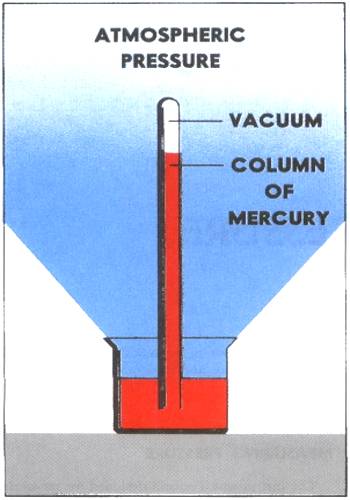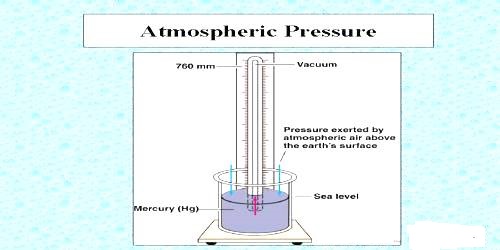Atmospheric Pressure: Weight of the atmosphere on a surface. At sea-level, the average atmospheric pressure is 1013.25 mb. Pressure is measured by a device called a barometer. It varies with temperature and altitude above sea level. It is an indicator of weather. When a low-pressure system moves into an area, it usually leads to cloudiness, wind, and precipitation. High-pressure systems usually lead to fair, calm weather.

Atmospheric Pressure is the pressure exerted by the earth’s atmosphere at any given point, being the product of the mass of the atmospheric column of the unit area above the given point and of the gravitational acceleration at the given point.
It is caused by the gravitational attraction of the planet on the atmospheric gases above the surface and is a function of the mass of the planet, the radius of the surface, and the amount of gas and its vertical distribution in the atmosphere. It is modified by the planetary rotation and local effects such as wind velocity, density variations due to temperature, and variations in composition.
It is a value of the standard or normal atmospheric pressure, equivalent to the pressure exerted by a column of mercury 29.92 inches (760 mm) high, or 1013 millibars (101.3 kilopascals).
















